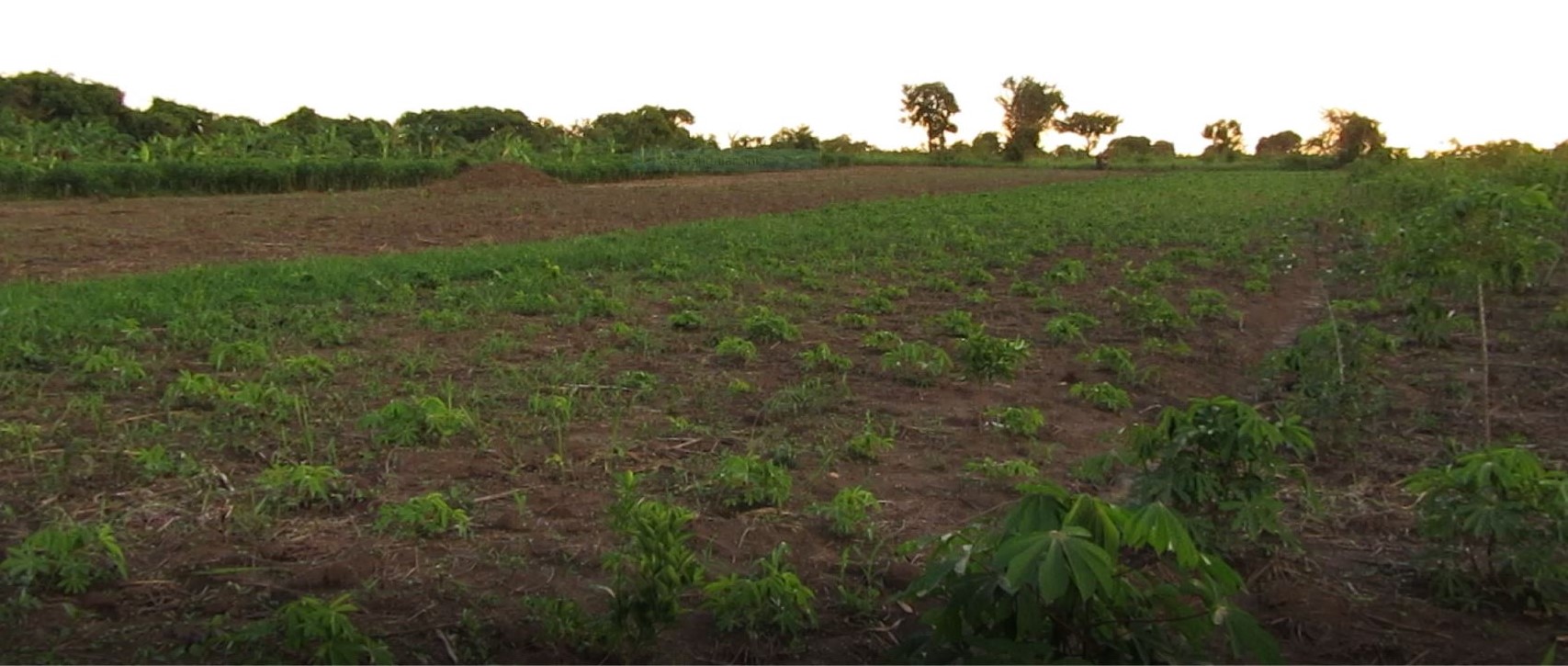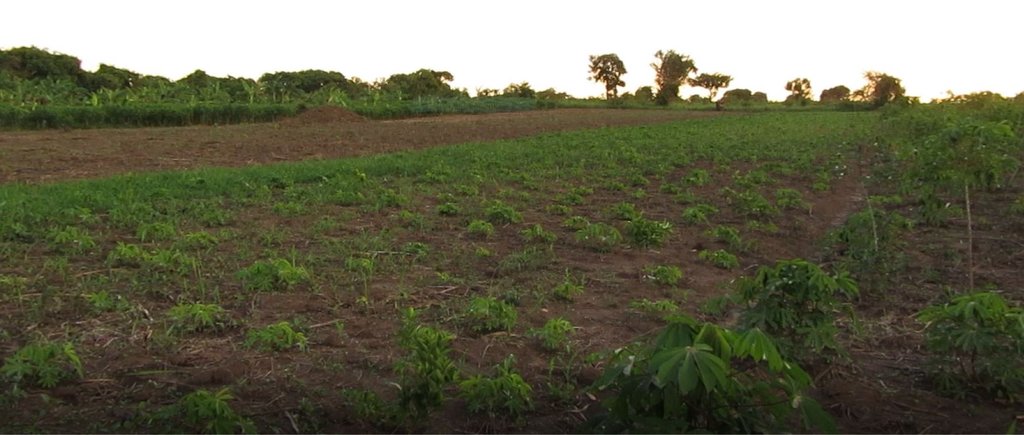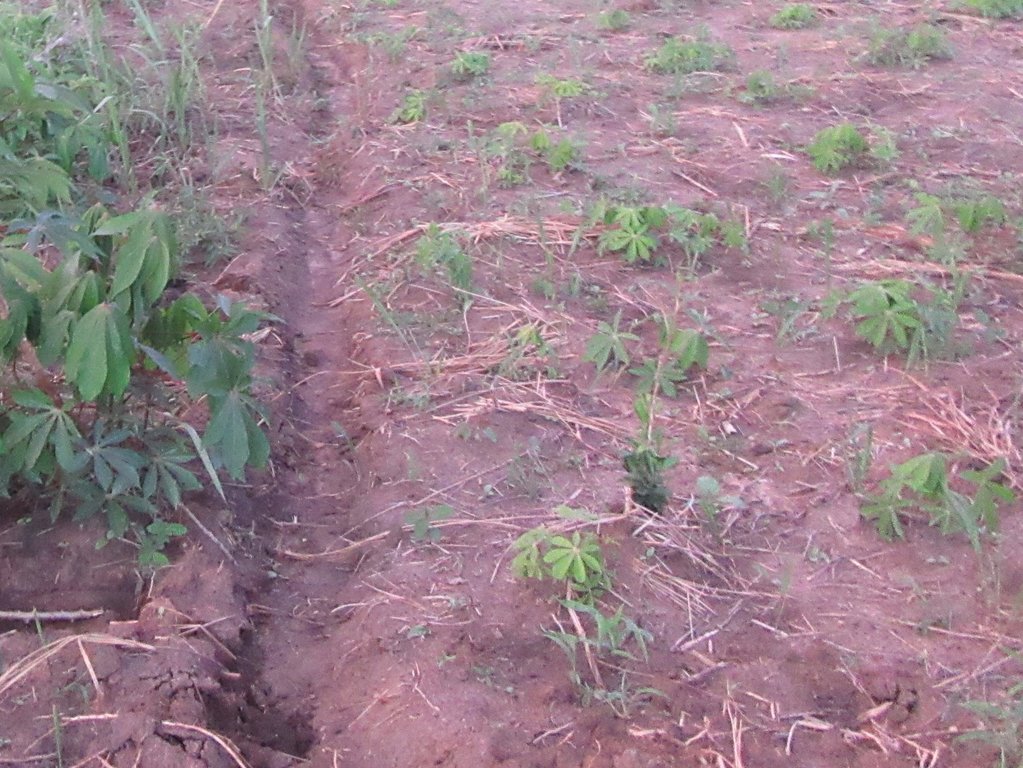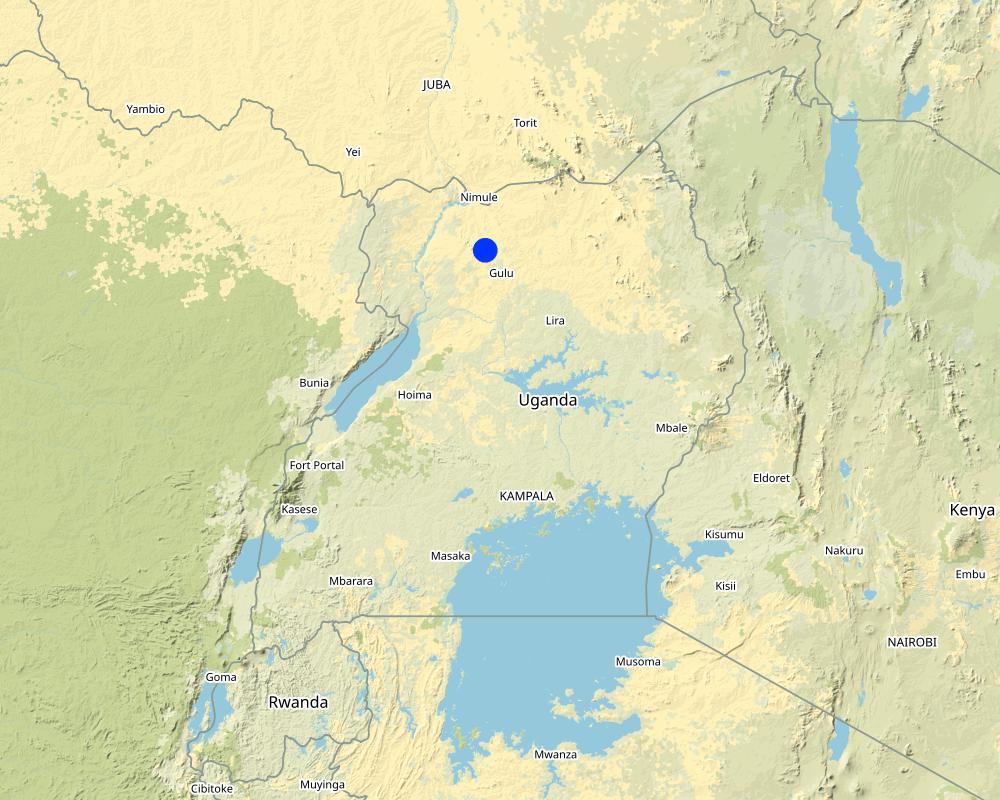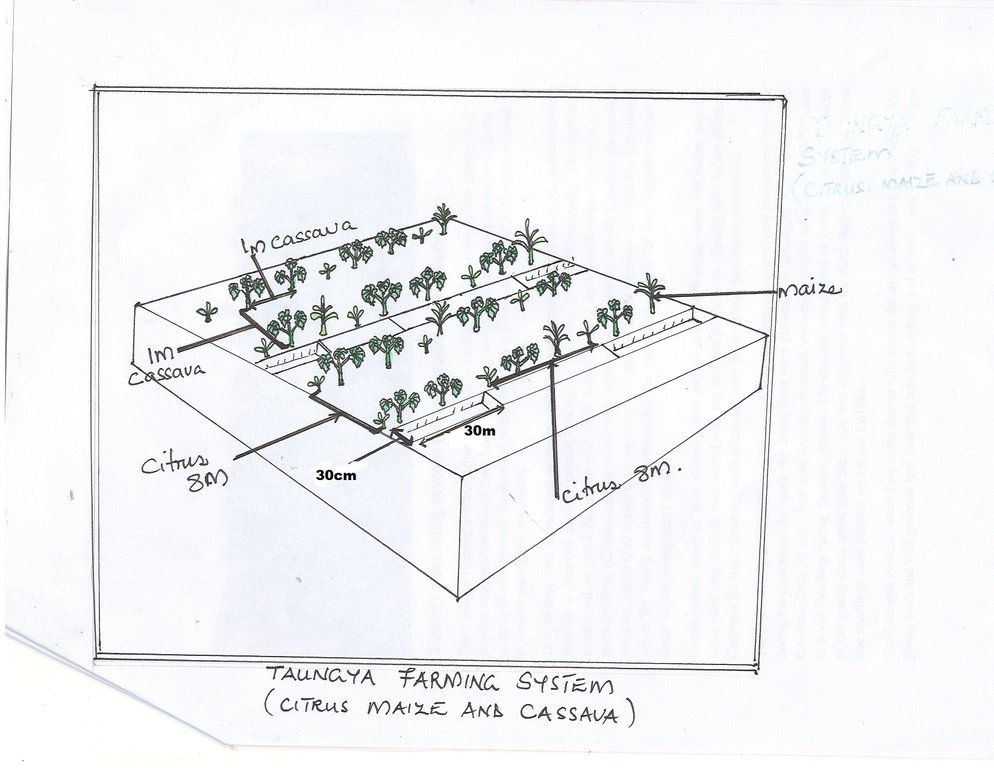Taungya Agroforestry System for Increased Production, Food Security, Soil Fertility and Household Income [Uganda]
- Creation:
- Update:
- Compiler: Jalia Namakula
- Editors: JOY TUKAHIRWA, Kamugisha Rick Nelson
- Reviewers: Drake Mubiru, Nicole Harari, Luigi Piemontese, Udo Höggel
technologies_2830 - Uganda
View sections
Expand all Collapse all1. General information
1.2 Contact details of resource persons and institutions involved in the assessment and documentation of the Technology
Key resource person(s)
land user:
Opobo David
0782893944 / 0716765818
opobod@gmail.com
Pobbo Sub County, Amuru District
Uganda
1.3 Conditions regarding the use of data documented through WOCAT
When were the data compiled (in the field)?
09/05/2017
The compiler and key resource person(s) accept the conditions regarding the use of data documented through WOCAT:
Yes
1.4 Declaration on sustainability of the described Technology
Is the Technology described here problematic with regard to land degradation, so that it cannot be declared a sustainable land management technology?
No
2. Description of the SLM Technology
2.1 Short description of the Technology
Definition of the Technology:
Taungya agro-forestry system (citrus,maize and cassava) involves the planting of crops in young tree plantations. The food crops are normally planted with trees to provide shade for the young seedlings especially during the dry season; the crop litter acts as mulch and compost after decomposition thereby regulating soil temperature, and improving soil moisture retention.
2.2 Detailed description of the Technology
Description:
The Taungya Agroforestry farming practice is promoted in Northern Uganda that allows farmers to cultivate food crops in young tree plantations for increased production, food security, soil fertility improvement and household income. The practice was started in Malaysia in 1896 and because of the increase in average annual temperatures in Uganda, it is gradually gaining momentum in Uganda.
This technology was established on 1.6 ha of land out of 10 ha owned by the farmer. It lies on a gentle slope and stretched to the wetland. On one field citrus (citrus sinensis) was planted as the major crop the other crops grown include; maize (zea mays) local variety and cassava an improved variety (manihot esculenta) NASE14.
The citrus is grown for purely commercial purposes, the maize and cassava grown for food security and also provides shade for the young citrus trees especially during the dry season.
Establishing the system involved bush clearing and ox ploughing. Digging planting holes, applying manure and drainage channels dug after the seedlings had firmly established.
The citrus seedlings were planted in 90 cm × 90 cm × 45 cm (width × length × depth) planting holes, excavated to conserve soil moisture during prolonged dry spells. The citrus spacing was 8 m × 8 m.
Within the citrus field, 30cm × 30 m mini drainage channels were made to drain excess water during the rainy season. The cassava was planted at 1 m × 1 m between the spaces of the citrus seedlings and then the maize was staggered within the field. Approximately 500 citrus seedlings were planted within the 1.6 ha.
In Taungya systems, the annual crops provide shade for the young trees and generate leaf litter which acts as mulch for moisture conservation and also enhances soil fertility. Taungya systems also increase household income because they allow crop diversification within the same field. The drainage channels reduce flood incidences on the field.
The system has a few challenges, for example during harvesting of cassava the citrus roots can be damaged, which affects their performance.
Establishing the drainage channels was labor intensive, thus the channels fall short of the recommended 60 cm recommended width.
2.3 Photos of the Technology
2.4 Videos of the Technology
Date:
26/05/2017
Location:
Pabbo Sub County, Amuru District, Northern Uganda
Name of videographer:
Isa Aiga
2.5 Country/ region/ locations where the Technology has been applied and which are covered by this assessment
Country:
Uganda
Region/ State/ Province:
Northern Uganda
Further specification of location:
Pabbo Sub county , Amuru Districts
Comments:
3.01642, 32.12677, The location lies in Pabbo sub-county Amuru District.
Map
×2.6 Date of implementation
Indicate year of implementation:
2016
2.7 Introduction of the Technology
Specify how the Technology was introduced:
- through projects/ external interventions
Comments (type of project, etc.):
Government programme of Operation Wealth Creation
3. Classification of the SLM Technology
3.1 Main purpose(s) of the Technology
- improve production
- create beneficial economic impact
3.2 Current land use type(s) where the Technology is applied

Cropland
- Annual cropping
- Perennial (non-woody) cropping
Main crops (cash and food crops):
Cassava, Bananas, Citrus and Maize
If land use has changed due to the implementation of the Technology, indicate land use before implementation of the Technology:
rice cultivation
3.3 Further information about land use
Water supply for the land on which the Technology is applied:
- rainfed
Comments:
Although the land is near the valley bottom the land user depends on rainfall.
Number of growing seasons per year:
- 2
Specify:
Maize is grown twice in a season but citrus is a perenial crop, the channels were dug in the first season.
3.4 SLM group to which the Technology belongs
- agroforestry
- water diversion and drainage
3.5 Spread of the Technology
Specify the spread of the Technology:
- evenly spread over an area
If the Technology is evenly spread over an area, indicate approximate area covered:
- < 0.1 km2 (10 ha)
Comments:
The agro forestry system occupies 1.6 ha of land
3.6 SLM measures comprising the Technology

agronomic measures
- A1: Vegetation/ soil cover
- A2: Organic matter/ soil fertility
- A5: Seed management, improved varieties

structural measures
- S3: Graded ditches, channels, waterways
3.7 Main types of land degradation addressed by the Technology

soil erosion by water
- Wt: loss of topsoil/ surface erosion

physical soil deterioration
- Pw: waterlogging

biological degradation
- Bc: reduction of vegetation cover
3.8 Prevention, reduction, or restoration of land degradation
Specify the goal of the Technology with regard to land degradation:
- prevent land degradation
- reduce land degradation
Comments:
The drainage channels were constructed to prevent flooding
4. Technical specifications, implementation activities, inputs, and costs
4.1 Technical drawing of the Technology
4.2 Technical specifications/ explanations of technical drawing
The citrus was planted in a planting hole of, width(75cm), length(75cm), depth (30cm) at a spacing 3×3m. The cassava is an improved NARO ( National Agricultural Research Organisation) NASE14 planted at a spacing of 1m×1m. The maize, a local variety was planted staggeringly in the field. The drainage channels are narrow and measured at 30cm(width)×15cm(depth)×30m(length).
4.3 General information regarding the calculation of inputs and costs
Specify how costs and inputs were calculated:
- per Technology area
Indicate size and area unit:
1.6 ha
other/ national currency (specify):
UGX
Indicate exchange rate from USD to local currency (if relevant): 1 USD =:
3650.0
Indicate average wage cost of hired labour per day:
3000/=
4.4 Establishment activities
| Activity | Type of measure | Timing | |
|---|---|---|---|
| 1. | Bush clearing | Management | July 2016 |
| 2. | Ploughing | Agronomic | August 2016 |
| 3. | Digging planting basins | Agronomic | August 2016 |
| 4. | Manure application | Agronomic | September 2016 |
| 5. | Planting | Agronomic | September 2016 |
| 6. | Digging planting basins | Structural | September 2016 |
| 7. | Digging trenches | Structural | April 2017 |
Comments:
The Citrus was planted in 2016, cassava ,maize and the drainage channels were excavated
4.5 Costs and inputs needed for establishment
| Specify input | Unit | Quantity | Costs per Unit | Total costs per input | % of costs borne by land users | |
|---|---|---|---|---|---|---|
| Labour | Bush clearing | people | 5.0 | 75000.0 | 375000.0 | 100.0 |
| Labour | Digging trenches | people | 5.0 | 20000.0 | 100000.0 | 100.0 |
| Labour | Ploughing | people | 4.0 | 100000.0 | 400000.0 | 100.0 |
| Labour | Diging basins | people | 550.0 | 1000.0 | 550000.0 | 100.0 |
| Equipment | Planting | holes | 550.0 | 500.0 | 275000.0 | 100.0 |
| Plant material | Citrus | plants | 550.0 | 3000.0 | 1650000.0 | |
| Plant material | Cassava | bag | 8.0 | 20000.0 | 160000.0 | |
| Fertilizers and biocides | Manure | bag | 20.0 | 5000.0 | 100000.0 | |
| Other | Transport | 10.0 | 60000.0 | 600000.0 | 100.0 | |
| Total costs for establishment of the Technology | 4210000.0 | |||||
If land user bore less than 100% of costs, indicate who covered the remaining costs:
Planting material was given by Operation Wealth Creation but establishment costs were borne by land users
4.6 Maintenance/ recurrent activities
| Activity | Type of measure | Timing/ frequency | |
|---|---|---|---|
| 1. | Weeding | Agronomic | twice/season |
| 2. | Spraying with fungicide | Agronomic | once/month |
Comments:
The citrus has just established there maintenance activities are still few
4.7 Costs and inputs needed for maintenance/ recurrent activities (per year)
| Specify input | Unit | Quantity | Costs per Unit | Total costs per input | % of costs borne by land users | |
|---|---|---|---|---|---|---|
| Labour | Weeding | acres | 4.0 | 80000.0 | 320000.0 | 100.0 |
| Labour | Spraying | acres | 4.0 | 20000.0 | 80000.0 | 100.0 |
| Equipment | Spray pump | piece | 1.0 | 120000.0 | 120000.0 | 100.0 |
| Fertilizers and biocides | Pesticides | Litres | 1.0 | 20000.0 | 20000.0 | 100.0 |
| Total costs for maintenance of the Technology | 540000.0 | |||||
If land user bore less than 100% of costs, indicate who covered the remaining costs:
All costs were borne by the land user
4.8 Most important factors affecting the costs
Describe the most determinate factors affecting the costs:
Availability of labour
5. Natural and human environment
5.1 Climate
Annual rainfall
- < 250 mm
- 251-500 mm
- 501-750 mm
- 751-1,000 mm
- 1,001-1,500 mm
- 1,501-2,000 mm
- 2,001-3,000 mm
- 3,001-4,000 mm
- > 4,000 mm
Specify average annual rainfall (if known), in mm:
1813.00
Specifications/ comments on rainfall:
The rainfall on set for the year 2017 started late i.e. in April instead of March
Indicate the name of the reference meteorological station considered:
Gulu Meteorology Station
Agro-climatic zone
- humid
5.2 Topography
Slopes on average:
- flat (0-2%)
- gentle (3-5%)
- moderate (6-10%)
- rolling (11-15%)
- hilly (16-30%)
- steep (31-60%)
- very steep (>60%)
Landforms:
- plateau/plains
- ridges
- mountain slopes
- hill slopes
- footslopes
- valley floors
Altitudinal zone:
- 0-100 m a.s.l.
- 101-500 m a.s.l.
- 501-1,000 m a.s.l.
- 1,001-1,500 m a.s.l.
- 1,501-2,000 m a.s.l.
- 2,001-2,500 m a.s.l.
- 2,501-3,000 m a.s.l.
- 3,001-4,000 m a.s.l.
- > 4,000 m a.s.l.
Indicate if the Technology is specifically applied in:
- not relevant
5.3 Soils
Soil depth on average:
- very shallow (0-20 cm)
- shallow (21-50 cm)
- moderately deep (51-80 cm)
- deep (81-120 cm)
- very deep (> 120 cm)
Soil texture (topsoil):
- medium (loamy, silty)
Soil texture (> 20 cm below surface):
- fine/ heavy (clay)
Topsoil organic matter:
- medium (1-3%)
5.4 Water availability and quality
Ground water table:
< 5 m
Availability of surface water:
good
Water quality (untreated):
good drinking water
Is water salinity a problem?
No
Is flooding of the area occurring?
Yes
Regularity:
episodically
Comments and further specifications on water quality and quantity:
Drinking water is got from the borehole
5.5 Biodiversity
Species diversity:
- medium
Comments and further specifications on biodiversity:
The farm has a diversity of crops including cassava, bananas and maize.
5.6 Characteristics of land users applying the Technology
Sedentary or nomadic:
- Sedentary
Market orientation of production system:
- mixed (subsistence/ commercial
Off-farm income:
- 10-50% of all income
Relative level of wealth:
- rich
Individuals or groups:
- individual/ household
Level of mechanization:
- manual work
Gender:
- men
Age of land users:
- middle-aged
Indicate other relevant characteristics of the land users:
He owns a fish pond and a maize processing mill and he keeps records of all incomes and expenditure
5.7 Average area of land owned or leased by land users applying the Technology
- < 0.5 ha
- 0.5-1 ha
- 1-2 ha
- 2-5 ha
- 5-15 ha
- 15-50 ha
- 50-100 ha
- 100-500 ha
- 500-1,000 ha
- 1,000-10,000 ha
- > 10,000 ha
Is this considered small-, medium- or large-scale (referring to local context)?
- medium-scale
Comments:
He owns 20 acres of land, average land holding in this community is 5 acres
5.8 Land ownership, land use rights, and water use rights
- customary
- customary
Water use rights:
- communal (organized)
5.9 Access to services and infrastructure
health:
- poor
- moderate
- good
education:
- poor
- moderate
- good
technical assistance:
- poor
- moderate
- good
employment (e.g. off-farm):
- poor
- moderate
- good
markets:
- poor
- moderate
- good
energy:
- poor
- moderate
- good
roads and transport:
- poor
- moderate
- good
drinking water and sanitation:
- poor
- moderate
- good
financial services:
- poor
- moderate
- good
6. Impacts and concluding statements
6.1 On-site impacts the Technology has shown
Socio-economic impacts
Production
risk of production failure
Comments/ specify:
The food crops provide shade to the young seedlings therefore reducing seedling growth failure.
Income and costs
expenses on agricultural inputs
Comments/ specify:
Because litter from the crops grown maintainces soil moisture and shade reduces soil temperatures, the need for the farmer to regularly irrigate the citrus seedling during the dry season reduces.
diversity of income sources
Comments/ specify:
The farmer expects to get multiple incomes from selling the citrus fruits and cassava
Socio-cultural impacts
food security/ self-sufficiency
Comments/ specify:
From the same piece of land, maize and cassava are available for food.
Ecological impacts
Water cycle/ runoff
excess water drainage
Comments/ specify:
The channels drain excess water during the rainy season.
Biodiversity: vegetation, animals
plant diversity
Comments/ specify:
Plant diversity is high because of mixed cropping (Cassava, Maize and Citrus)
6.2 Off-site impacts the Technology has shown
downstream flooding
Comments/ specify:
Water that comes from the garden is diverted into neighbours fields
6.3 Exposure and sensitivity of the Technology to gradual climate change and climate-related extremes/ disasters (as perceived by land users)
Gradual climate change
Gradual climate change
| Season | Type of climatic change/ extreme | How does the Technology cope with it? | |
|---|---|---|---|
| annual temperature | increase | well | |
| annual rainfall | decrease | well |
6.4 Cost-benefit analysis
How do the benefits compare with the establishment costs (from land users’ perspective)?
Short-term returns:
slightly positive
Long-term returns:
very positive
How do the benefits compare with the maintenance/ recurrent costs (from land users' perspective)?
Short-term returns:
slightly positive
Long-term returns:
positive
Comments:
It is only the maize that matures first therefore in the short term establishment costs are negative. Cassava and citrus are long term crops therefore benefits are realized much later.
6.5 Adoption of the Technology
- single cases/ experimental
Of all those who have adopted the Technology, how many have did so spontaneously, i.e. without receiving any material incentives/ payments?
- 90-100%
6.6 Adaptation
Has the Technology been modified recently to adapt to changing conditions?
No
6.7 Strengths/ advantages/ opportunities of the Technology
| Strengths/ advantages/ opportunities in the land user’s view |
|---|
| The kind of ago-forestry improves food security |
| There is an increase in incomes from the sale of crops |
| The technology is good at reducing soil erosion. |
| Strengths/ advantages/ opportunities in the compiler’s or other key resource person’s view |
|---|
| The technology encourages optimal utilisation of land |
| Reduction of water logging |
6.8 Weaknesses/ disadvantages/ risks of the Technology and ways of overcoming them
| Weaknesses/ disadvantages/ risks in the land user’s view | How can they be overcome? |
|---|---|
| Citrus takes long to mature | Inter-crop with annuals |
| Weaknesses/ disadvantages/ risks in the compiler’s or other key resource person’s view | How can they be overcome? |
|---|---|
| Costly in terms of purchase of different seed varieties | Join farmers associations for agricultural loan to pay after harvest and sale. |
| If the cassava is not properly spaced it can interfere with root movement | Plant the trees away from drainage channel |
7. References and links
7.1 Methods/ sources of information
- field visits, field surveys
1 person
- interviews with land users
1 person
7.3 Links to relevant information which is available online
Title/ description:
Evaluation of agroforestry systems for maize (Zea mays) productivity in South Africa
URL:
https://www.tandfonline.com/doi/abs/10.1080/02571862.2018.1459898
Links and modules
Expand all Collapse allLinks
No links
Modules
No modules


